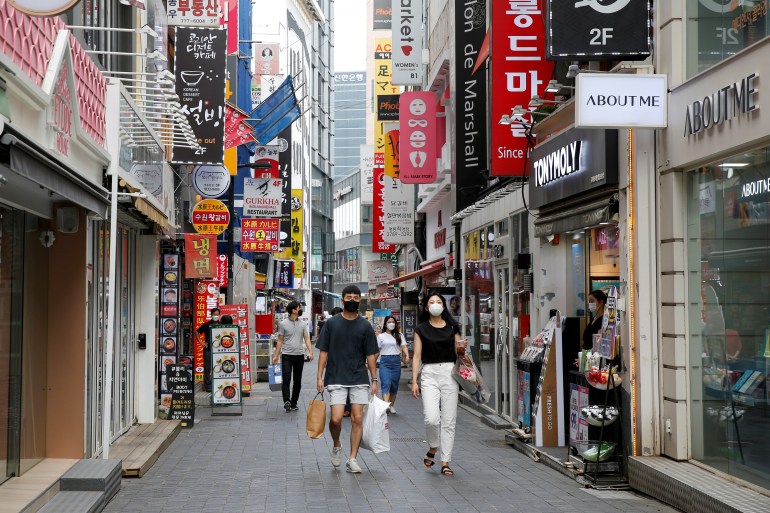Bouncing back: South Korea’s recession ends as exports surge
Government stimulus measures and a surge in exports helped South Korea post a 1.9 percent growth rate in the third quarter.
South Korea’s economy returned to growth in the third quarter, recovering from its sharpest contraction in more than 10 years, as the government pushed through stimulus measures and its biggest trading partners eased coronavirus restrictions.
Asia’s fourth-largest economy grew by a seasonally adjusted 1.9 percent in the September quarter compared with the April-to-June period, the Bank of Korea (BOK) said on Tuesday, logging its fastest expansion since the first quarter of 2010.
That reverses a 3.2 percent decline in the second quarter, which was the sharpest since 2008 and beats a median forecast of analysts polled by the Reuters news agency of a 1.7 percent growth rate.
On a year-on-year basis, the economy shrank by 1.3 percent in the third quarter, after declining by a revised 2.7 percent in the second quarter.
Alex Holmes, an economist at research firm Capital Economics, is forecasting a 1 percent contraction in gross domestic product (GDP) for the whole of 2020, noting ongoing risks from the severity of the pandemic in the United States and Europe.
“While this would be the worst performance since 1998, it would still make Korea one of the best-performing economies in the world this year,” he told the Reuters news agency.
Stimulus measures
A late summer resurgence of the virus in South Korea that led to tighter social distancing rules has eased. The government resumed the distribution of discount coupons – halted during the second virus wave – to encourage spending, and is promoting an annual shopping event in early November to accelerate the recovery.
The BOK, which has cut interest rates to a record low of 0.5 percent, has forecast a 1.3 percent contraction for the year, potentially South Korea’s biggest contraction in more than 20 years.
Finance Minister Hong Nam-ki said the GDP data confirmed the growth trajectory was beginning “to normalise, which is important in that it encourages we can overcome the crisis.”
 Interest rate cuts and the South Korean government’s distribution of discount coupons to encourage shopping have helped consumer spending to improve [File: Heo Ran/Reuters]
Interest rate cuts and the South Korean government’s distribution of discount coupons to encourage shopping have helped consumer spending to improve [File: Heo Ran/Reuters]The government last month began rolling out the final of four extra budgets to inject a total of about 310 trillion South Korean won ($275bn) of fiscal stimulus.
Exports soared 15.6 percent in the third quarter compared to the previous three months, rebounding at the fastest rate since 1986 and reversing a 16.1 percent contraction in the second quarter.
But some analysts cautioned that that performance may not last.
“The rising second-wave outbreak in developed-market economies is concerning,” economist Rory Green, at research firm TS Lombard told the Bloomberg news agency before the GDP announcement. He said South Korea could still benefit from a “Zoom boom” – the growth in demand for high-end electronic devices and applications that facilitate remote work such as video-conferencing system Zoom – even if new rounds of lockdowns are implemented.
Meanwhile, the construction sector was not as buoyant, though there were some signs that factory production is improving with manufacturing sector output up 7.6 percent from the second quarter.
Construction investment was a drag, declining 7.8 percent on-quarter, while private consumption fell 0.1 percent.
Source: Thanks AlJazeera.com